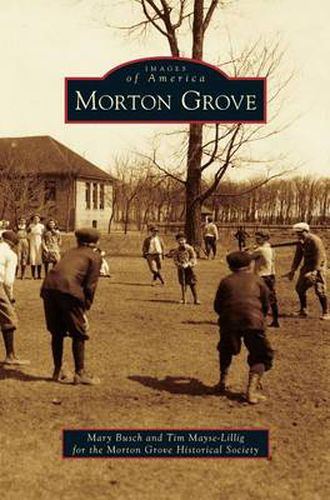Readings Newsletter
Become a Readings Member to make your shopping experience even easier.
Sign in or sign up for free!
You’re not far away from qualifying for FREE standard shipping within Australia
You’ve qualified for FREE standard shipping within Australia
The cart is loading…






This title is printed to order. This book may have been self-published. If so, we cannot guarantee the quality of the content. In the main most books will have gone through the editing process however some may not. We therefore suggest that you be aware of this before ordering this book. If in doubt check either the author or publisher’s details as we are unable to accept any returns unless they are faulty. Please contact us if you have any questions.
The land comprising the village of Morton Grove holds stories of American Indian villages, European settlement, and diverse ethnic groups. Features attracting people to this land are visible throughout the forest preserves, where remnants of woodlands, prairies, and the North Branch of the Chicago River exist today. Following the Treaty of Chicago in 1833, early settlers utilized energy generated by damming the river to power Miller’s Mill and harvested timber from the rich woodlands. Fertile prairie soils attracted truck farmers in the 1840s, and the floral industry boomed once tracks were laid for the Chicago, Milwaukee & St. Paul Railway Company in 1872. This whistle stop was named for Levi Parsons Morton, an official of the railroad and vice president of the United States from 1889 to 1893 under Benjamin Harrison. Morton Grove became well known for its pickle companies, prize-winning roses, airfields, and roadhouses.
$9.00 standard shipping within Australia
FREE standard shipping within Australia for orders over $100.00
Express & International shipping calculated at checkout
This title is printed to order. This book may have been self-published. If so, we cannot guarantee the quality of the content. In the main most books will have gone through the editing process however some may not. We therefore suggest that you be aware of this before ordering this book. If in doubt check either the author or publisher’s details as we are unable to accept any returns unless they are faulty. Please contact us if you have any questions.
The land comprising the village of Morton Grove holds stories of American Indian villages, European settlement, and diverse ethnic groups. Features attracting people to this land are visible throughout the forest preserves, where remnants of woodlands, prairies, and the North Branch of the Chicago River exist today. Following the Treaty of Chicago in 1833, early settlers utilized energy generated by damming the river to power Miller’s Mill and harvested timber from the rich woodlands. Fertile prairie soils attracted truck farmers in the 1840s, and the floral industry boomed once tracks were laid for the Chicago, Milwaukee & St. Paul Railway Company in 1872. This whistle stop was named for Levi Parsons Morton, an official of the railroad and vice president of the United States from 1889 to 1893 under Benjamin Harrison. Morton Grove became well known for its pickle companies, prize-winning roses, airfields, and roadhouses.